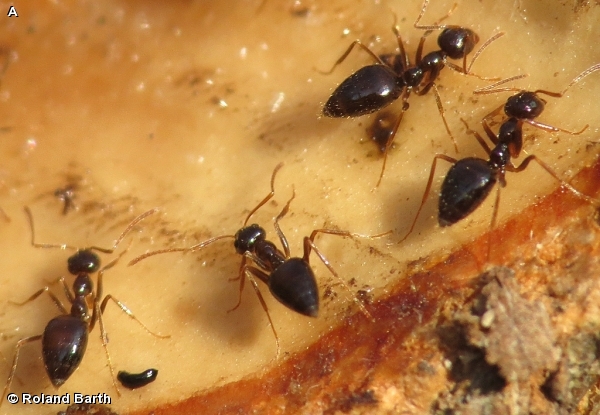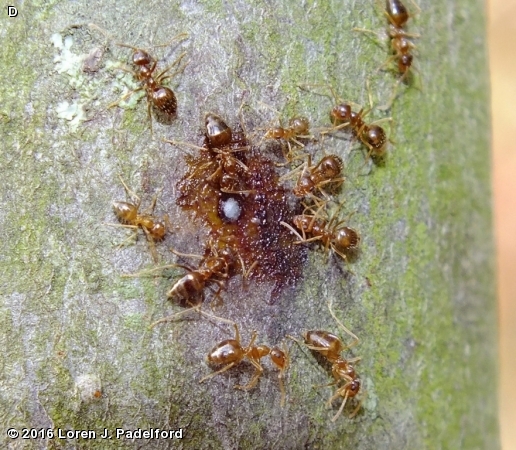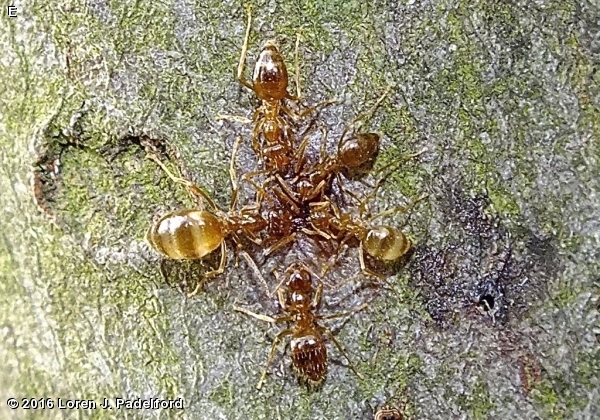
Prenolepis imparis
ANTS (Formicidae)
Description
This small ant (about 1/4inch long) likes to forage at temperatures barely above freezing. It is dark brown to light brown in color and has an abdomen which tapers towards the end, and a thorax which is pinched at the middle giving it an “hourglass” appearance. Note the difference in size of some of these ants, some apparently having ingested more sap than others (C & E). The ants in these photographs were identified with the help of an ant expert at BugGuide.
Occurrence
The ants in photos A-C were photographed along the trail in Child’s Hollow, Fontenelle Forest on 19 Mar 2015. They were feeding on the sap of a recently beaver-felled small tree. According to BugGuide, this was the first documented observation of this species in Nebraska. These ants are probably common in this area. Several other colonies feeding on sap were subsequently found in the uplands of Fontenelle Forest in March 2015. The ants in photos D & E were present on the serviceberry trees in front of the nature center in late October 2016. They were eating oozing sap.
Comments
There is only one known species in the genus Prenolepis in North America. These ants nest deep in the ground and are inactive during the hot summer months. They emerge when the weather cools to become active. These ants range over most of the U.S., southern Ontario and Mexico. They are sometimes called Winter Ant but are not found in the far north in spite of their tolerance for cold temperatures.
Disclaimer: The content of NatureSearch is provided by dedicated volunteer Naturalists of Fontenelle Forest who strive to provide the most accurate information available. Contributors of the images retain their copyrights. The point of contact for this page is: Loren Padelford.




